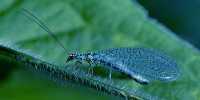Soap bubbles promote pollination in a pear orchard by distributing pollen grains to target flowers, showing that it is capable of pollinating fruit-bearing trees. Scientists at the Japan Advanced Institute of Science and Technology in Noam have created a robotic pollinator in an effort to help complement the work of a dead bee population. As pollinators, bees are hard to beat. Nevertheless, this did not prevent researchers from working with a high-tech alternative: drones that blow up soap bubbles to transport pollen to flowers.
“It sounds a bit like fantasy, but effective soap bubbles allow for effective pollination and assure that the quality of the fruit is similar to that of conventional hand pollination, said Ijiro Miyako, an associate professor at the School of Materials Science at the Japan Advanced Institute. Effective soap bubbles have
innovative possibilities and unique features compared to other types of remote pollen, such as the effective flow of pollen grains in the targeted flowers and high flexibility to avoid losses.”
Not involved in the work, said Henry Williams, a roboticist at the University of Auckland, which is a really great approach. But some biologists doubt that drones will be an effective replacement for bees.
Previously, researchers had built a small toy drone capable of pollinating flowers, but it also brought a push. Although it measured only two centimeters long, the team had trouble holding it to destroy it as the flowers flew. Miyako then decided
to come up with a better flower-friendly artificial pollination technique. His inspiration came while spending a day in the park, a bubble bursting gently in his son’s face while he was blowing bubbles with his son. Miyako realized that the delicate structure of the bubbles makes them the perfect pollen for flowers.
He and his colleagues tested a variety of surfactants – detergents that form a soap film that creates bubbles that have the least effect on mination and germination with the ability to increase their sperm cell supply tubes in the ovaries of pollen
grains. Then, in lab experiments, they bombarded pear flowers with pollen bubbles. After popping the bubbles, the pollen lands on the pistil, the female reproductive part, and the grains increase the pollen tubes. However, the tubes keep more than 10 bubble flowers shorter than usual, probably due to some
adverse effects of the soap solution.
One advantage of using bubbles over feather brushes is that bubbles require very little pollen. The researchers found that a feather brush applied about 1800 milligrams of pollen for each flower, while only 0.06 milligrams were needed for the bubbles. This means that farmers need to collect very little pollen before
pollinating their own flowers if they add it to a soap solution. While this is a promising solution for pollination, other strategies need to be developed to make it more precise. Weather conditions may also play a role in how soap bubbles succeed in pollination. Rainfall can wash away the pollen bubbles of flowers, while strong winds can carry them.















